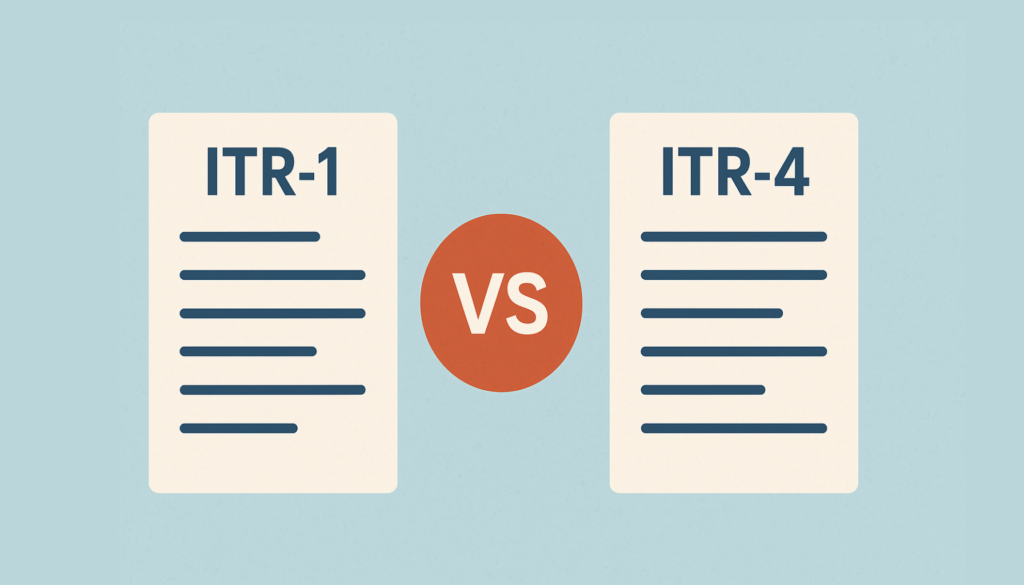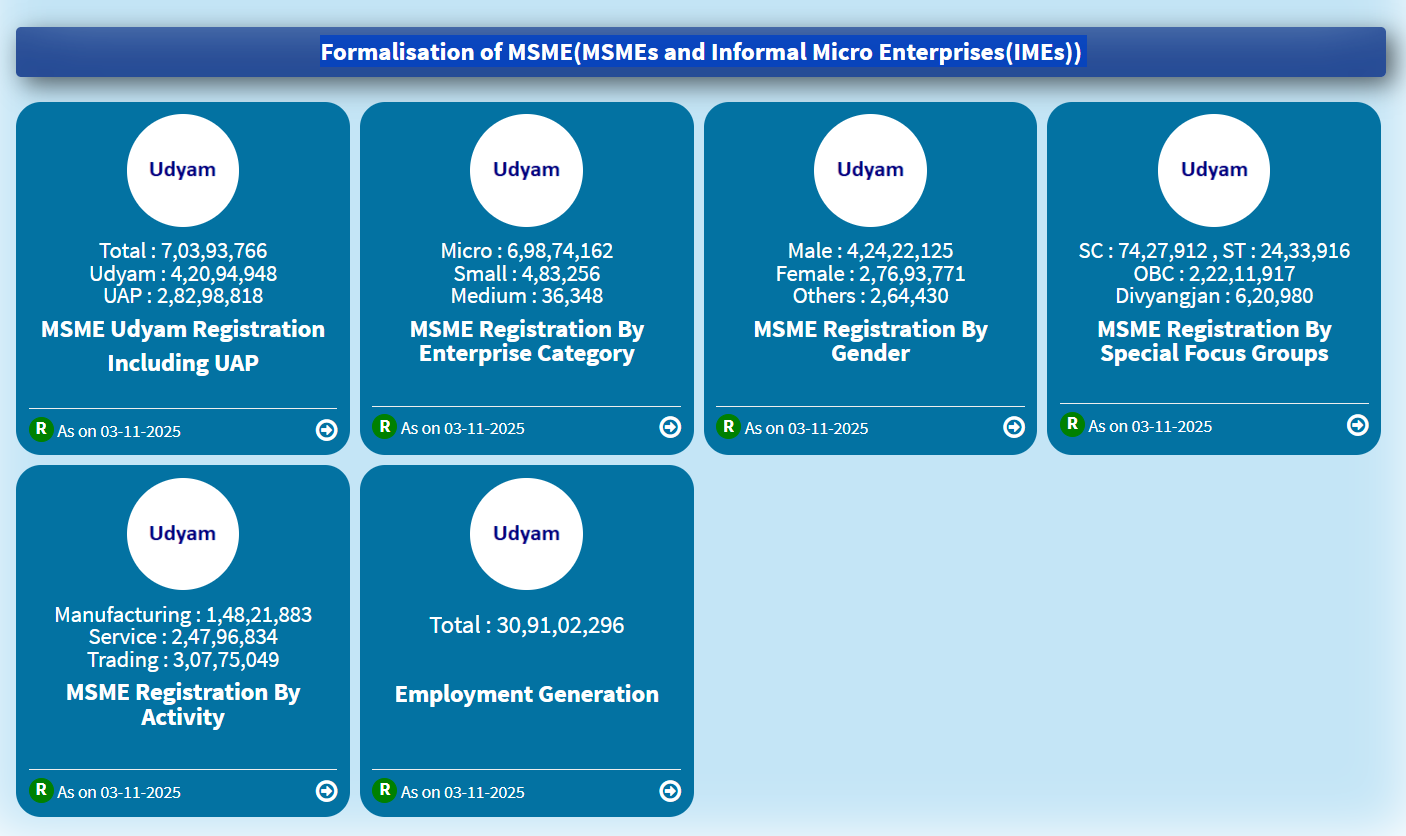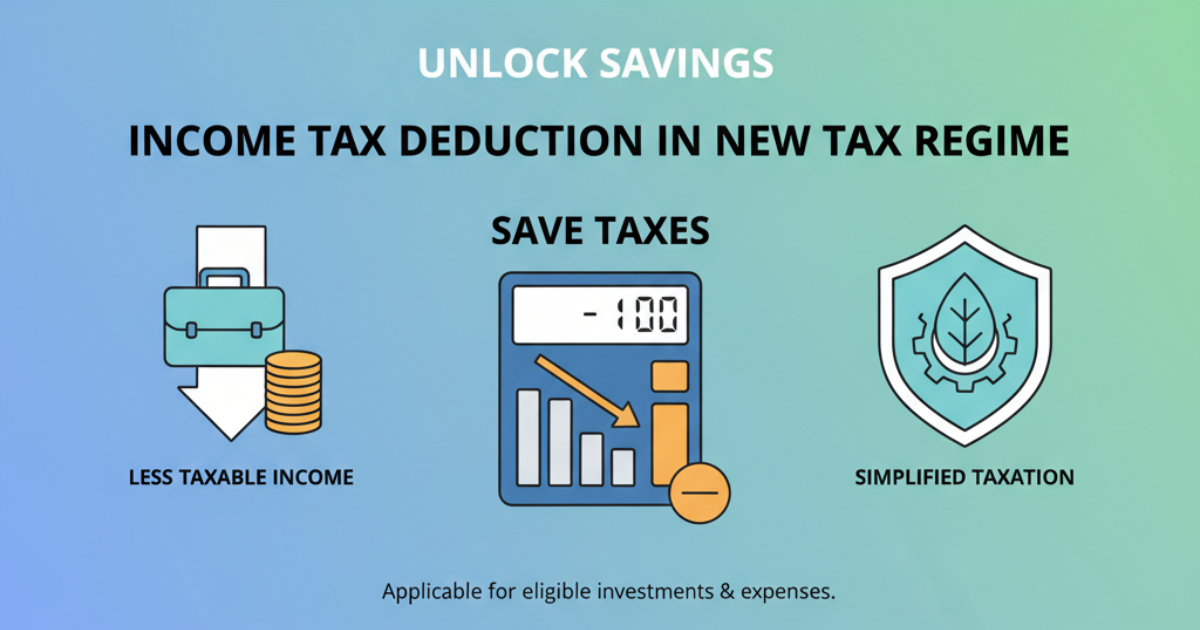Table of Contents
ToggleITR-1 vs ITR-4: Confused Which Form to Choose?

Filing your Income Tax Return (ITR) correctly is crucial for avoiding penalties and ensuring smooth processing of your tax refunds. However, many taxpayers get confused when it comes to selecting the right ITR form, especially between ITR-1 and ITR-4. Choosing the wrong form can delay your filing or even invite notices from the Income Tax Department. In this blog, we will simplify the difference between ITR-1 and ITR-4 and help you decide which ITR form to choose for ITR filing 2025.
Why Choosing the Right ITR Form is Important?
Filing your ITR is not just a compliance requirement but also an opportunity to maintain a clean tax record. The Income Tax Department offers different forms catering to various types of taxpayers based on their income sources and business nature. Selecting the correct form:
- Avoids unnecessary scrutiny or rejection.
- Ensures that you claim appropriate deductions and rebates.
- Helps in smooth processing of refunds.
- Prevents legal complications or penalties.
Understanding the nuances of ITR-1 vs ITR-4 will simplify your tax return process and save you from common mistakes.
What is ITR-1 (Sahaj)?
ITR-1, also called Sahaj, is one of the simplest and most used forms designed for salaried individuals or pensioners.
Eligibility for ITR-1:
You should file ITR-1 if all the following apply to you:
- Income from Salary or Pension.
- Income from One House Property (excluding cases where there is carry-forward loss from previous years)
- Income from Other Sources (like Interest from bank deposits)
- Total income does not exceed ₹50 lakh for the financial year.
Who should file ITR-1?
Typical taxpayers who should opt for ITR-1 include:
- Salaried professionals without any business income.
- Pensioners with income under ₹50 lakh.
- Individuals with income from a single house property (not claiming losses)
- Income from interest, dividends, or other sources but excluding lottery or racehorse winnings.
Income Sources Allowed in ITR-1:
- Salary/Pension
- One house property (excluding loss carry-forward)
- Interest income
- Other sources (excluding capital gains, lottery, or income from business)
What is ITR-4 (Sugam)?
ITR-4, also known as Sugam, is designed for individuals and Hindu Undivided Families (HUFs) who have income from business or profession and opt for presumptive taxation.
Eligibility for ITR-4:
You may file ITR-4 if:
- You have business or professional income under presumptive taxation scheme (Section 44AD, 44AE, or 44ADA)
- Total income is up to ₹50 lakh.
- Income sources include salary, one house property, and other sources as allowed in ITR-1.
What is Presumptive Taxation?
Presumptive Taxation is an optional scheme where your business income is presumed at a certain percentage of turnover or gross receipts. This simplifies tax compliance as you don’t need to maintain detailed books of accounts.
Examples:
- Small business owners or freelancers with turnover under ₹2 crore can opt for presumptive taxation.
- Professionals like doctors, lawyers with income up to ₹50 lakh under presumptive scheme 44ADA.
Who should file ITR-4?
- Small business owners under presumptive taxation.
- Professionals with presumptive income.
- Individuals with income from salary, house property, and other sources alongside business income under presumptive scheme.
ITR-1 vs ITR-4: A Quick Comparison Table
| Feature | ITR-1 (Sahaj) | ITR-4 (Sugam) |
|---|---|---|
| Eligibility | Individuals with income from salary/pension, one house property, other sources (up to ₹50 lakh) | Individuals/HUFs with business or professional income under presumptive taxation scheme, plus other incomes (up to ₹50 lakh) |
| Income Limit | Up to ₹50 lakh | Up to ₹50 lakh |
| Business Income | Not allowed | Allowed only under presumptive taxation |
| Types of Income Covered | Salary, Pension, One House Property, Other Sources | Business/Profession income (presumptive), Salary, One House Property, Other Sources |
| Presumptive Taxation Allowed? | No | Yes |
| Books of Account Required? | No | No (in case of presumptive taxation) |
| Who should file? | Salaried individuals, pensioners, landlords without business income | Small business owners, freelancers under presumptive taxation scheme |
| Complexity Level | Simple | Moderate (requires understanding of presumptive taxation) |
Common Mistakes People Make While Choosing Between ITR-1 and ITR-4
Filing the wrong ITR form is a common mistake that can cause problems later. Here are some pitfalls to avoid:
- Filing ITR-1 if you have business income: If you have any business or professional income, especially under presumptive taxation, you must file ITR-4, not ITR-1.
- Not opting for presumptive taxation when eligible: If you have small business income but do not use presumptive taxation or choose the wrong form, you lose the benefit of simplified taxes.
- Reporting income sources incorrectly: Sometimes taxpayers inadvertently report capital gains or income from multiple house properties in ITR-1 which is not allowed.
- Ignoring the income cap: Both ITR-1 and ITR-4 are meant for incomes up to ₹50 lakh. If your income exceeds that, you need to file other applicable forms.
- Overlooking deductions or exemptions: Make sure the form you choose allows you to claim all your deductions under sections like 80C, 80D, etc.
Conclusion: Which Form Should You Choose for ITR Filing 2025?
Choosing the correct ITR form is essential for hassle-free tax filing. Use ITR-1 if you are a salaried individual with simple income sources and no business income. Opt for ITR-4 if you have a small business or professional income under presumptive taxation.
If you are still confused between ITR-1 and ITR-4, or if your income sources are more complex, it is wise to consult a tax professional. They can guide you on the appropriate form, earnings reporting, and maximising your tax benefits while ensuring compliance.
Key Takeaways:
- ITR-1 is for simple salaried taxpayers with income up to ₹50 lakh.
- ITR-4 is for small businesses/professionals using presumptive taxation.
- Using the wrong form may cause processing delays or penalties.
- When in doubt, seek professional advice for smooth ITR filing 2025.
Need help with your ITR filing? Contact a trusted tax advisor today and file your returns with confidence!
By understanding the difference between ITR-1 and ITR-4 and knowing which ITR form to choose, you can make your tax filing process simpler, accurate, and stress-free for this financial year.









